Textile conservator, Tabby Gibbs, tells us about conserving the cushion for the settle from Mackintosh’s Willow Tea Rooms as her final project.
Last year (2023), as my final object treatment for the MPhil in Textile Conservation at the University of Glasgow, I was privileged to carry out conservation on the horsehair cushion cover designed for the timber settle in Charles Rennie Mackintosh’s Willow Tea Rooms in The Glasgow School of Art (GSA) collection.
As a design history fan, and admirer of Mackintosh’s work, I was delighted to be given the opportunity to work on the cushion which he designed to sit on the curved back supervisor’s chair (figure 1). Mackintosh was commissioned to design the entirety of the interior and exterior of the Tea Rooms in 1903. The cushion was originally a green and gold striped haircloth (a horsehair and cotton fabric), chosen for its durability and lustre.
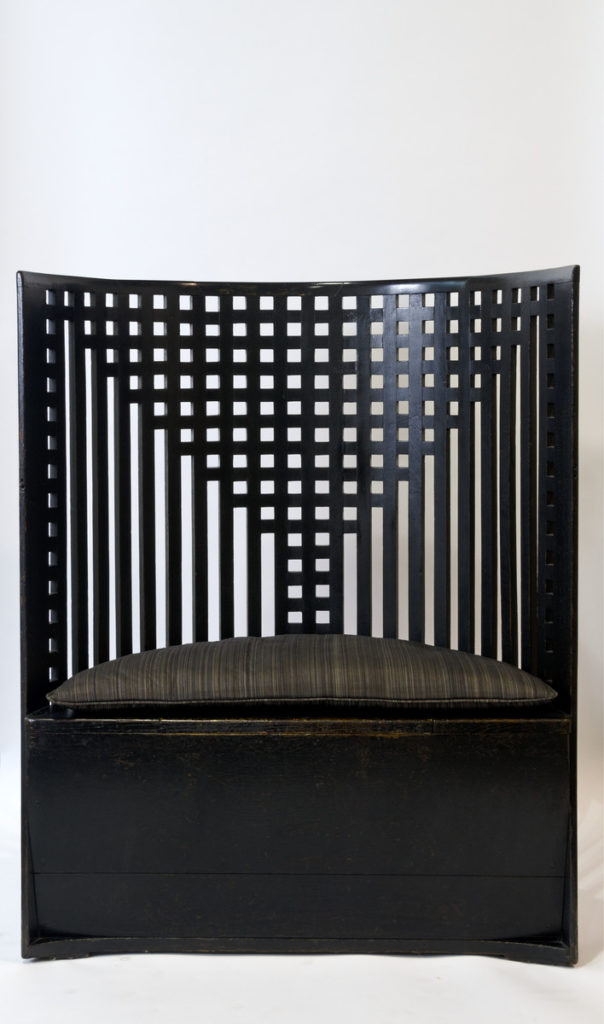
The settle and cushion eventually found their way into the collection at GSA, but due to its poor condition, the cushion cover was placed into storage in 1984 and replaced with a replica. The main condition issue was the widespread compacted and greasy soiling on the top fabric, a result of many years of use in a restaurant environment. Additionally, the shape of the cover was distorted, resulting in mechanical weakness and splits to the horsehair fibres. A 40mm x 80mm rectangular section had been cut out from the underside. There was no record of when or why this was removed, however upon further research and a visit to the archive, it was found that the removed section was located separately in a different box in the GSA store.
The aim of the project was to improve the aesthetic appearance of the cover and support it sufficiently, enabling it to be reunited with the settle on display and fulfil its original design intent. It was agreed that the cushion cover be cleaned, conserved, and supported so that it would be safe for storage or display.
My first challenge was figuring out the composition of the soiling, so I could decide how best to reduce this with cleaning methods. This was challenging because the soiling was widespread, complex, greasy and very compacted. To help me, I sourced samples of haircloth fabric and attempted to replicate the soiling. I describe the method I used for creating artificial soiling for testing here. I then narrowed down a process for reducing the soiling, without immersing it in water, which carried the risk of distorting the cushion so much it would no longer fit on the settle. I proceeded with an in-situ method, using a damp microfibre cloth. It is hard to tell at first glance, but it you look at the digital microscope images in figure 2, I’m sure you’ll agree that the impact is quite drastic. Overall, the green and gold colours and striped pattern are more uniform and more obvious, and Mackintosh’s original design intent is revealed.
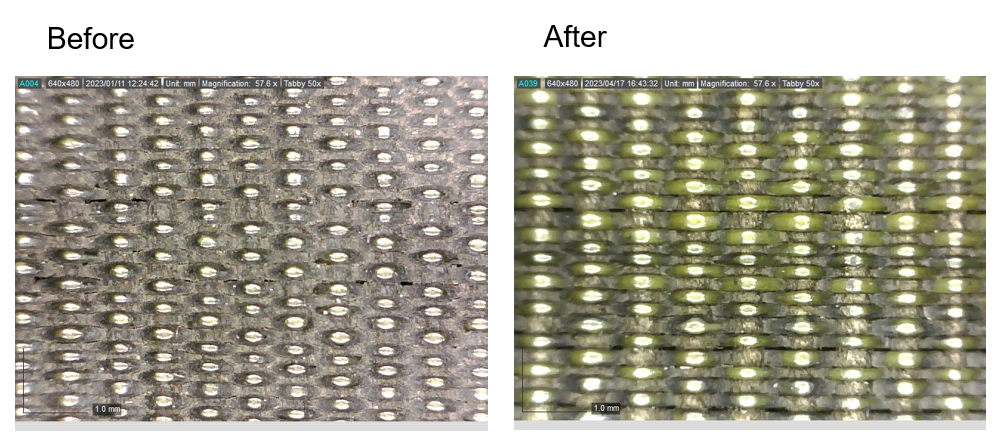
After the cleaning, I moved on to supporting the splits and holes in the cover with support stitching, to reduce strain therefore preventing further splitting. On consultation with the team at GSA, it was decided I would also replace the previously removed section back into its original position on the underside of the cover which worked really well (figures 3 & 4). All that was left was to construct a new padded insert to provide support to the cover and reduce the mechanical strain which had caused past distortion and splitting.
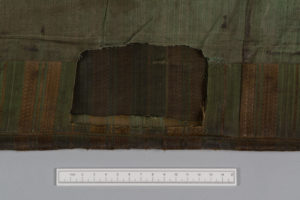
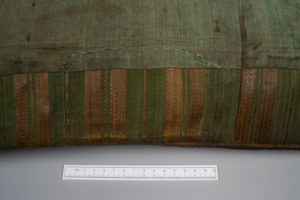
The treatments carried out will prevent further degradation and has vastly improved the cover’s aesthetic appearance, enabling it to be placed on display on the settle, or stored safely for the future (see the before and after images in figures 5 & 6). The whole process was challenging, but very rewarding and I really developed my skills as a trainee conservator, particularly in treatment decision-making. I especially enjoyed visiting the GSA stores to understand more about the context in which the cushion will be kept after treatment.
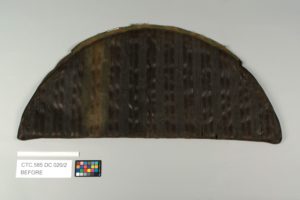
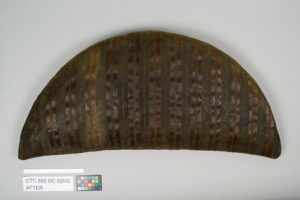
I want to extend my thanks to Michelle Kaye and the GSA team for trusting me with the conservation of such a special object, and to my tutor, Karen Thompson, for her guidance and support on this project. I am delighted with the outcome of my treatment and hope to see the cushion and settle reunited on display one day in the future.
